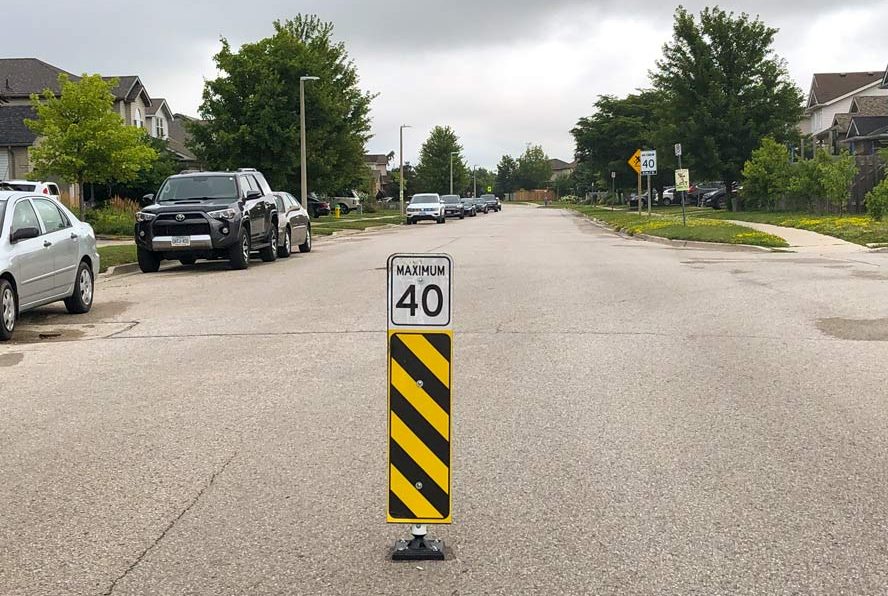ELORA – Speeding is among the top concerns councillors hear from residents, so Centre Wellington council was happy to learn the township is taking action on road safety.
Engineering manager Adam Gilmore presented the annual speed limit and traffic calming review at the April 11 committee of the whole meeting.
It recommends lowering speed limits on 26 of the 58 roads assessed, and adding speed reduction measures on others.
Affected streets in urban areas will be reduced from 50 to 40 km/h.
In rural areas the speed limit will go down from 80 to 60km/h on identified roads.
Speed reduction measures include installing bollards, electronic speed signs, enhanced OPP enforcement and line markings to narrow travel lanes and provide a buffer for pedestrians and cyclists.
As well, because of a few planned road construction projects, staff have considered speeds on neighbouring streets that will become detour routes when the projects get underway.
Some of those streets will see speed reductions too.
The speed limit on Sideroad 19, from Beatty Line to Highway 6, for example, will be reduced from 50 to 40km/h.
Flexible bollards will be installed as well ahead of the Beatty Line reconstruction project, which is anticipated to impact traffic on Sideroad 19, according to Gilmore’s report.
Drivers on Sideroad 15, between Gerry Road to Irvine Street, will have to slow down too. The speed limit will be reduced to 60km/h and staff will monitor data to assess the impact.
Richard Wright, a resident on 2nd Line, was not happy to see a speed limit reduction recommended for 2nd Line between Wellington Road 19 and Sideroad 25.
“I support the four-way stop at 2nd Line and Sideroad 25,” Wright said as he delegated to council.
“There is poor visibility and it should be levelled. But why are you reducing the speed?”
Wright said traffic had been diverted to 2nd Line because of a nearby bridge closure.
But since the bridge has reopened, traffic has calmed down and he doesn’t see the need to go from 80 to 60 km/h.
“Speed reduction is overkill on 2nd Line. Install 80 km signs, get enforcement, and see the outcome. Then you’ll have some data,” he said.
To questions from councillors, Gilmore said data will be collected and staff will review it annually to ensure the changes are having the desired impact.




